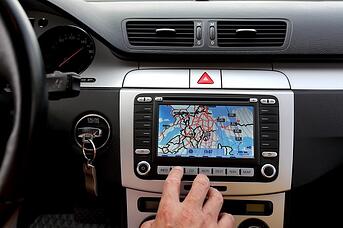 Distracted driving is an increasing problem on our roadways. While texting and other distractions, such as using GPS, eating, tuning MP3 players, etc., are obvious, the influx of new gadgets installed in vehicles by the auto industry raises questions about the level of distractions in many new technologies.
Distracted driving is an increasing problem on our roadways. While texting and other distractions, such as using GPS, eating, tuning MP3 players, etc., are obvious, the influx of new gadgets installed in vehicles by the auto industry raises questions about the level of distractions in many new technologies.
The increase in serious injuries and fatalities caused by distracted driving prompted the National Highway Traffic Safety Administration (NHTSA) to draft voluntary guidelines for the auto industry. Laws have also toughened regarding distracted driving and drivers who are found guilty face harsher sentences.
What Constitutes Distracted Driving?
A distraction is anything that causes a driver to take his or her eyes off the road. NHTSA guidelines recommend that no task require more than two seconds of looking away and no more than 12 seconds total to complete a task. This guideline is not recommended by our office, as we strongly advise taking your eyes off the road for no longer than half a second.
Phones
- Texting is probably the most common cause of distracted driving. NHTSA studies find that drivers who are texting are six times more likely to have an accident than drunk drivers. The average texter takes his or her eyes off the road for up to 23 seconds. Remember, NHTSA guidelines recommend only two seconds.
- Making a phone call requires that you dial the number, find it in your contacts or on your call log. These tasks require you to look away from the road.
- Many phones offer navigation features, which are helpful if you don’t have a GPS navigation system in your vehicle. Entering data and looking for a destination requires the driver to look at the phone and away from the road. Traffic maps are available on many phones but the driver has to look at the phone to navigate traffic looking away from the road during potentially busy traffic times.
- In the car accident cases we handle, we frequently learn that the distracted driver was searching for an address on their GPS.
Navigation Devices
- Many drivers attempt to find a location by entering destination data via there built-in GPS technology while en route.
- Wrong directions - everyone has had them! You’re in the wrong place, late and not sure where you are. Adjusting your system while driving means taking your eyes off the road, even if for a few seconds.
- Traffic maps cause the driver to look at his or her device rather than the road.
Dashboard Computers
Getting behind the wheel of the some new cars is almost like entering an airplane cockpit. Computers with touch screen capability are being installed in many new cars. It seems like a great idea to multi-task and get some work done while driving but touching the screen means looking away from the road. A representative from on e dashboard computer manufacturer acknowledged that scrolling down through menus, locating icons,, and making selections causes the driver to look away from the road, but claims that it is no more distracting than changing the radio.
The conflict between safety and the auto industry’s drive to make money selling new gadgets has blurred the line fo many between technology and driver safety. Manual distractions such as changing a radio accounted for 26,000 crashes in 2010. A radio station change is one push of one button. Drivers surfing the internet or checking Facebook look away frequently, exceeding NHTSA guidelines for time spent on a task.
Voice-Activated Systems or Bluetooth
Many in the auto industry have offered voice-activated systems as a safe option. However, a recent study released by MIT uncovered surprising results when testing the level of distraction drivers experience while using voice-activated technology.
Drivers instructing their vehicles to perform functions were less alert and had delayed reactions. Bruce Mehler, who led the team of researchers at MIT, tested what he called “cognitive load”, noting that the more information the brain has to deal with the less attentive the driver is to the road.
This is particularly true where voice activated systems malfunction. Drivers clarifying directions or correcting radio stations, according to Mehler, had an added cognitive load. The driver’s eyes were looking at the road but the distraction prevented the driver from actually seeing the road. This was true of all voice activated systems from phones to navigation.
The Bottom Line
Most drivers who have injured or killed someone in a texting incident don’t remember what they were texting. Most drivers surveyed say that whatever they had to text could wait. In the meantime more complicated technology means that your local and state laws are also more complicated. If you or a loved one has been injured by a distracted driver who was texting or on their cell phone, is important to get immediate legal advice. You can reach our Personal Injury Attorneys at bagenlaw.com. We will act as quickly as possible to obtain the at-fault party’s liability and increase your award. Contact us at bagenlaw.com now and fill out our new case contact form, and one of our attorneys will speak with you shortly.




